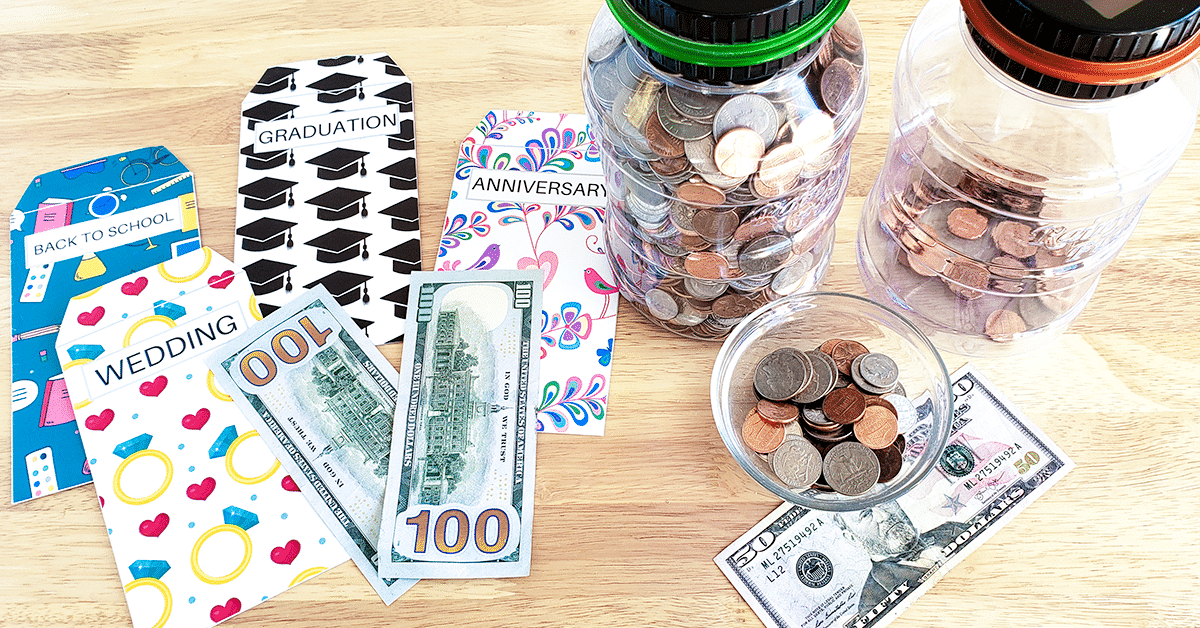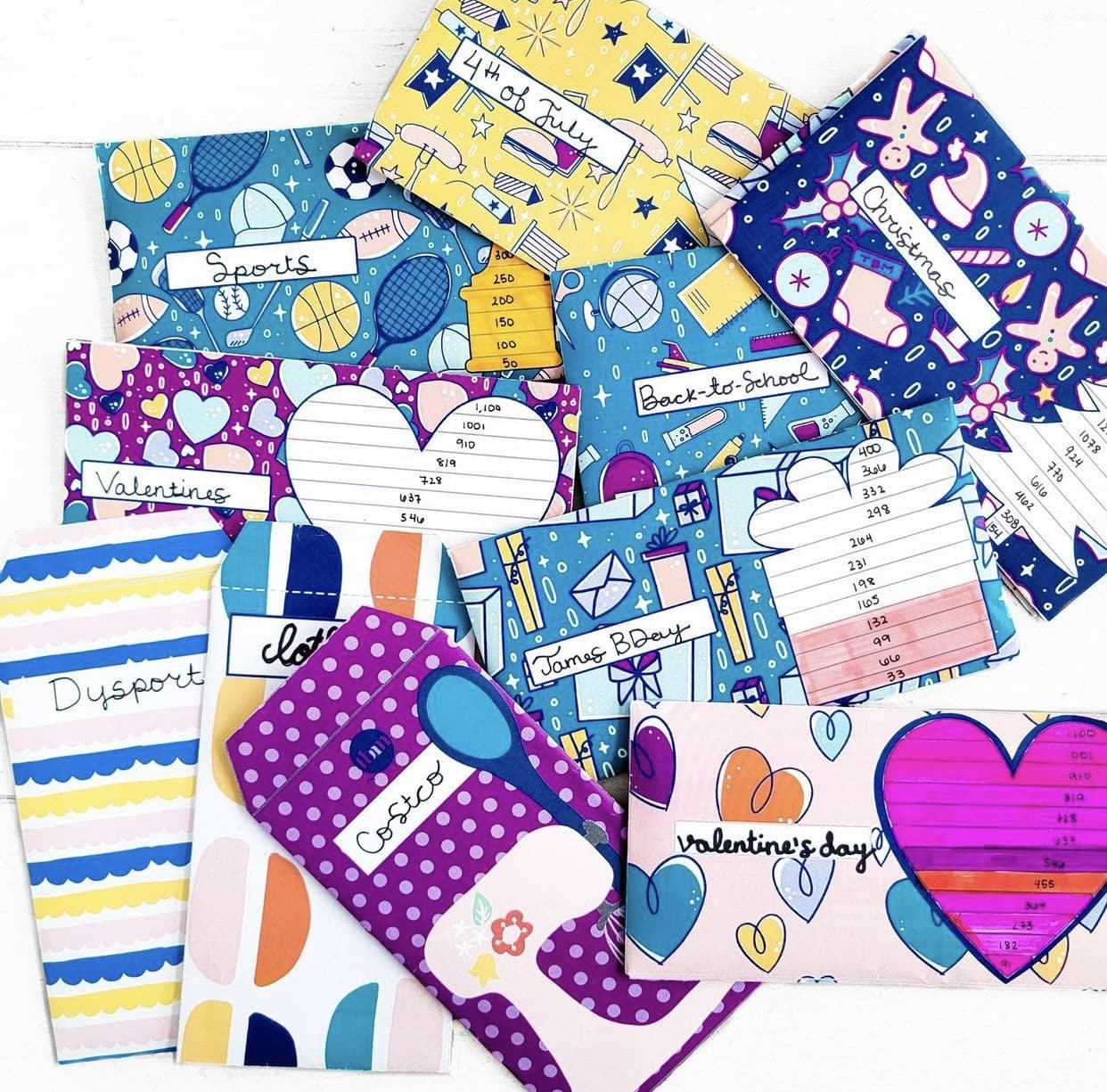
Saving money is important, but sometimes it feels impossible to save anything without feeling FOMO (fear of missing out) and like we're depriving ourselves. How do you balance saving money with living life to its fullest?
We live in a society where we are constantly bombarded with advertisements telling us to immediately spend our money on things we don’t really need. This can make saving money for a far-off goal even more challenging. In reality, saving money is essential to building wealth and achieving financial freedom.
Saving money isn’t doesn't have to mean FOMO. In fact, strategic saving usually leads to the opposite.
By knowing when to incorporate sinking funds into your budget versus when to cash flow, you can live life to the fullest without feeling like your budget is holding you back.
What Are Sinking Funds?
A sinking fund is a strategic savings strategy for larger purchases. Simply put, you save a little bit of money every month for expenses you know are on the horizon.
For example, if you want to buy a car next year, you could set aside $100 per month until you reach that goal. You wouldn’t use this money for everyday expenses or emergencies, just towards your long-term purchase goal.
Many people use sinking funds for:
- Large medical procedures
- Home repairs such as a new roof or windows
- Family vacations
- Saving for Christmas presents
- A downpayment on a home
Because sinking funds are for goals that are a few months away, they tend to be less stressful for budgeting. Plus, it's much better than cashing out the emergency fund to pay for these expenses. Remember, your emergency fund should be reserved for true emergencies such as an unexpected auto repair or a sudden loss of income.

What is Cash Flowing?
While sinking funds are excellent for upcoming expenses, it's not the only financial tactic in your pocket. Another option is to cashflow your expenses.
Cashing flowing is using your current spending paycheck to cover expenses. In other words, your income is flowing directly towards your expenses. You're able to pay for things in cash with your cash flow.
Unlike sinking funds that focus on future expenditures, cash flow is perfect for when you have last minute things pop up or maybe even a birthday dinner you forgot about.
In a healthy budget, every dollar should be accounted for… so when unexpected, non-emergency things pop-up in your budget, the temptation might be to put it on a credit card or to dip into your emergency savings account. However, if you can cash flow the expenses by moving numbers around in your budget, then that's the better option.
Here are last-minute scenarios that are perfect for cash flowing:
- Family or friends make an unexpected visit to your home
- Getting a last-minute invite to a dinner or party
- Supporting a fundraiser for a good cause
- Buying supplies for your child's school project
- Accidentally breaking a dish and needing to replace it
If it's not going to break your budget and you need the cash immediately, then cash flowing is the right option for you!
How to Choose Between Sinking Funds vs. Cash Flowing
Now that we've established the difference between these budget strategies let's explore what tactic is best for various circumstances.
When Should You Use Sinking Funds?
The first thing to consider is whether you need to use sinking funds or cash flow.
Let's say you want to get a new couch for your living room. This would be considered a large expense that will take several months to complete. It's also something that won't happen very often. So, it makes sense to create a sinking fund for this expense. The benefit of having a sinking fund is that you'll know exactly how much money you'll need to save each month for this purchase. If you don't set aside enough money, then you may find yourself struggling to afford the couch after all.
On the other hand, if you already have some extra money saved up from previous purchases, you could choose to just spend it on the couch instead of saving it for later (this would be cash-flowing).
This scenario shows why it's important to understand the difference between sinking funds and cash flows. When you're choosing which strategy to use, think about where your money comes from and where it goes.
When Should You Cash Flow Your Expenses?
Cash flowing your expenses means that you're taking advantage of your current income to pay for your expenses. For example, if you have $100 leftover at the end of the month, you could decide to use that as cash to buy groceries. Or, if you have $200 leftover, you could decide to go out to eat with your family and put the extra towards your debt.
Cash flowing your expenses is great because it allows you to enjoy life while still paying for the necessities. On top of that, you're not putting any more pressure on your finances than you already were.
However, there are times when you shouldn't cash flow your expenses. Let's say you're planning a vacation next week but you haven't saved anything yet. At this point, it doesn't make sense to use your existing income to pay for the trip. Instead, you'd need to wait until you have more money saved before you can cash flow your expenses.
Remember, cash flowing your expenses isn't always a bad idea. Sometimes, it's perfectly fine to use your current income to cover your expenses. But, if you're in a situation where you're short on money, it might be better to use a sinking fund instead.
How is a Sinking Fund Different from a Savings Account?
Saving accounts are designed to help you accumulate money for future expenses. They usually require you to deposit a certain amount of money in a certain time period (say, per year) to keep the account open. However, they aren't meant to be used for immediate or near-term spending. That's why they're called savings accounts.
A sinking fund is different. A sinking fund is meant to provide a steady savings stream of money so you can pay for specific purposes such as vacation or car repairs. In addition, it helps you plan for big expenses like buying a house or starting a business.

The key difference between a savings account and a sinking fund is that a sinking fund provides a steady stream of money for a specific purpose. Therefore, it's easier to budget for these expenses since you know exactly what your money will be doing.
Why Can't I Just Put Money on a Credit Card Instead of Cash-Flowing?
Credit cards are convenient ways to get extra money without having to save first. If you don't want to save, then credit cards may seem like an easy way to get additional cash. However, using credit cards isn't the best option for most people. Here's why:
Interest rates are high
You probably already know that interest rates are higher on credit cards than on other types of loans. The average APR on a credit card is around 20%. Compare that to the 4% APR on a personal loan or even 0% APR on a home equity line of credit.
Fees are too expensive
Not only do you have to pay interest on credit cards, but you also have to pay fees. Many credit cards charge annual fees ranging from $50-$300. This fee covers things like late payments, missed payments, and excessive usage. These fees can add up quickly.
Your debt could continue to grow
If you continue to use your credit card to buy items, you'll end up with a bigger balance. And, when you carry a larger balance, you'll start accruing interest charges. So, over time, your credit card debt will increase.
What Are Some Other Budgeting Strategies?
One of the best things you can do for your budget is to prioritize your savings account. I personally love using CIT Bank because they reward you for being intentional and strategic with your savings.
They offer 7X the national average interest rate for your savings account! To accelerate your savings, you either need to maintain a balance of $25K or deposit a minimum of $100 each month.
If you're looking to be intentional about your savings account without the fees, I encourage you to check out CIT Bank!

